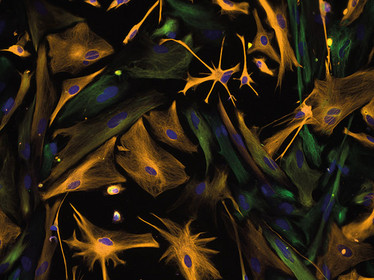Researchers in Japan and the USA have used stem cell grafts to regenerate the corticospinal tract (a bundle of specialized nerve cells that are crucial for motor function) in rats with severed spinal cords (1), pointing the way toward new treatment options.
“I’m a physician–scientist and work on the most clinically relevant aspects of neural regeneration. In humans, the most important motor system for voluntary control is the corticospinal tract, so we concentrated our work there,” says co-lead researcher Mark Tuszynski, Director of the Translational Neuroscience Institute at the UC San Diego School of Medicine.
In the study, neural progenitor cells taken from rat embryos were induced to differentiate along a caudal (spinal) pathway, and implanted in the severed spinal cords of adult rats. The results show robust corticospinal axon regeneration, functional synapse formation, and improved forelimb function after grafts were placed into the sites of injury in rodents. The researchers then tried the same experiment using cells derived from human neural stem cells, yielding similar results.

Credit: Carol Ibe, Eugene Major, National Institute of Neurological Disorders and Stroke, National Institutes of Health
Previous animal studies have demonstrated some success in using stem cells to regenerate the spinal cord after injury, but this is the first study to show regeneration of corticospinal axons in large, clinically relevant lesion sites. And though the results represent an important step forward, there is still work to be done before human trials can be considered. Tuszynski explains, “We are currently preparing a paper describing corticospinal regeneration in larger animals. We must scale these methods up to systems that better recapitulate the complexity of the human spinal cord. Clinical trials are still a few years off.” While large animal trials are ongoing, the team is also working on identifying the precise stem cell type that should be advanced towards possible human clinical trials.
- K Kadoya et al., “Spinal cord reconstitution with homologous neural grafts enables robust corticospinal regeneration”, Nat Med (2016, Epub ahead of print). PMID: 27019328.
My fascination with science, gaming, and writing led to my studying biology at university, while simultaneously working as an online games journalist. After university, I travelled across Europe, working on a novel and developing a game, before finding my way to Texere. As Associate Editor, I’m evolving my loves of science and writing, while continuing to pursue my passion for gaming and creative writing in a personal capacity.















